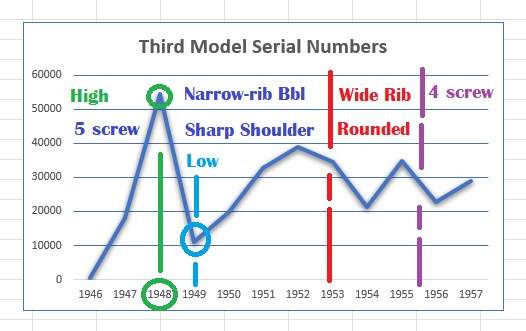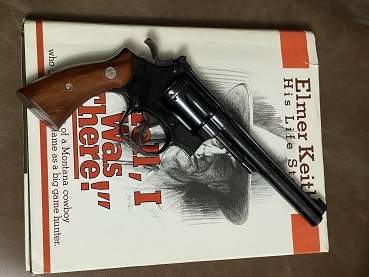-
1946
This was the first production K-22 Masterpiece completed in 1946 and was used by the factory to showcase their K-22 line of revolvers.
-
1953
Only another gun enthusiast could understand the passion that can overtake you when that one gun comes along. Oh boy! It can take you by surprise...
-
1957
You don't name a gun Masterpiece and not back it up with workmanship. Smith & Wesson went beyond backing up the claim, "no brag, just fact."
-
1960
So what was the change that precipitated the dash one designation? The modification was changing the ejector rod from right hand to left hand thread...
Smith & Wesson's K-22 Masterpiece - The Third Model... was Produced from 1946 to 1957
"Badges? We don't need no stinking badges." The year was 1948 and Humphrey Bogart was filming the movie "The Treasure of the Sierra Madre." Another of his films was already in theatres that year, "Key Largo."
Other events of 1948... The Berlin Blockade and Airlift kicked off the Cold War. The State of Israel was created and the Arab-Israeli War occurs. The United States Armed Forces were desegregated and women were allowed in the Air Force (WAFs). The first woman was elected to the Senate. The Summer Olympics made their return in 1948 in London, England.

George Orwell finished his manuscript for his new book "1984" and checked himself into a TB Sanatorium in 1948. This was the backdrop of how things were when my k-22 Masterpiece rolled out of the Smith & Wesson factory that same year.








